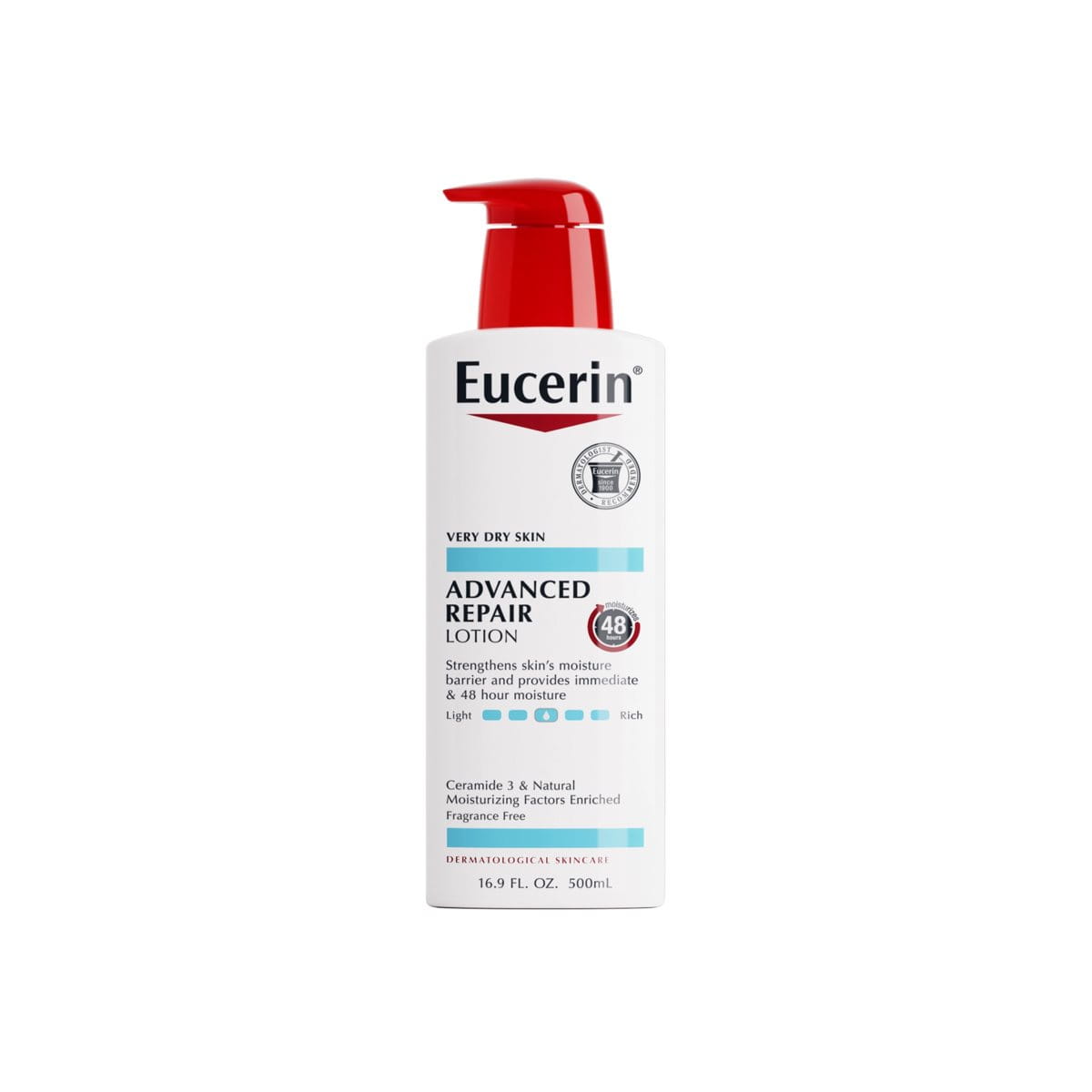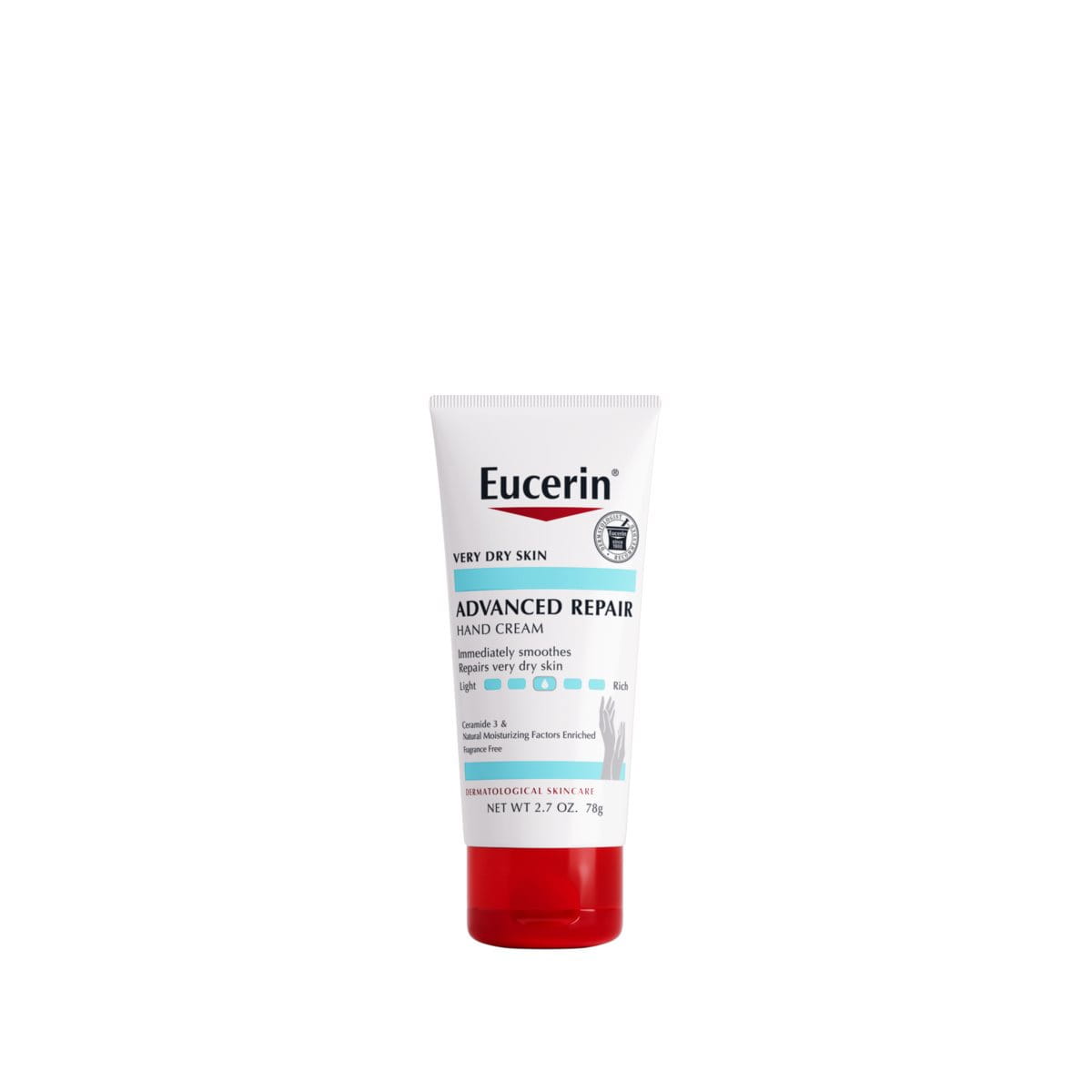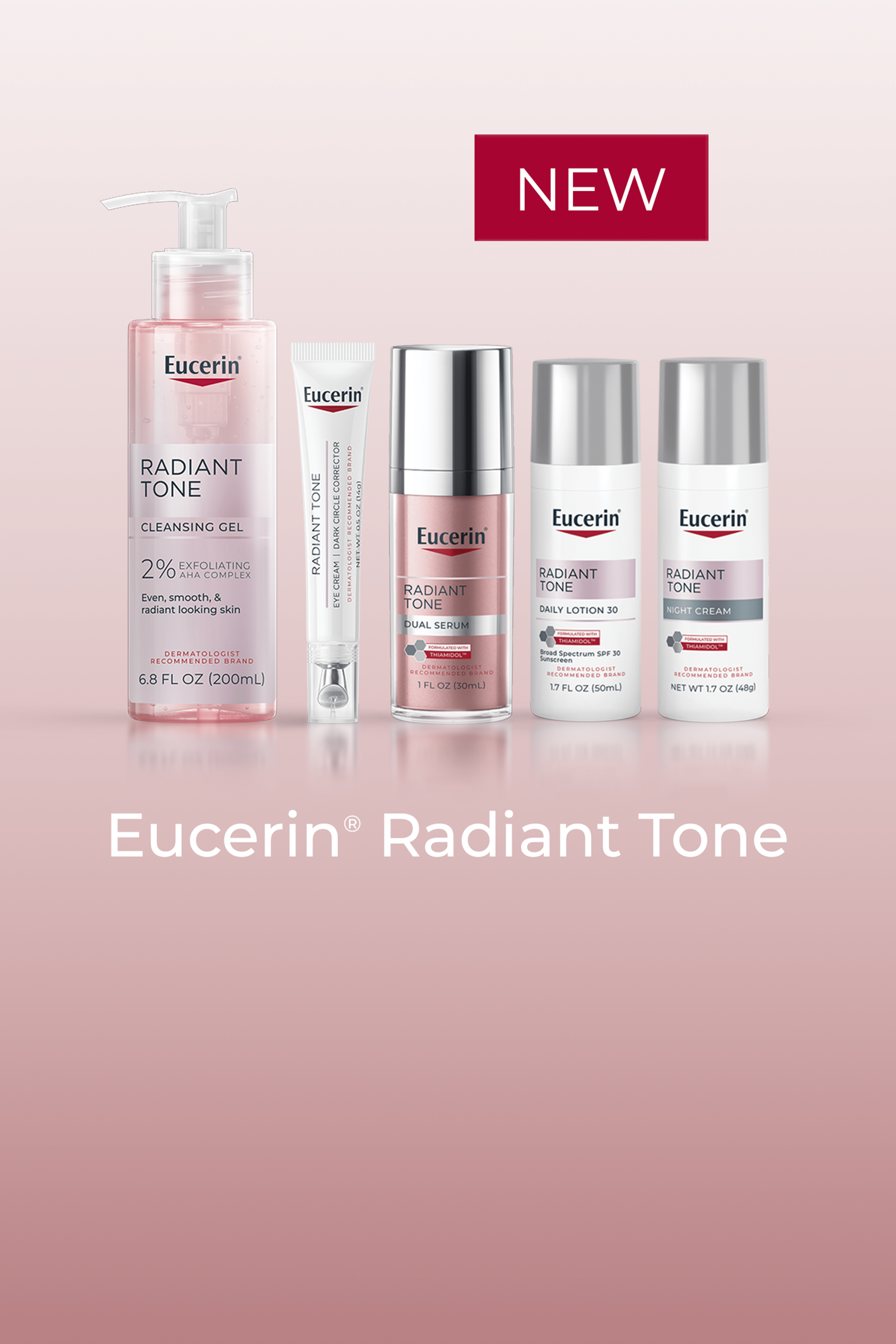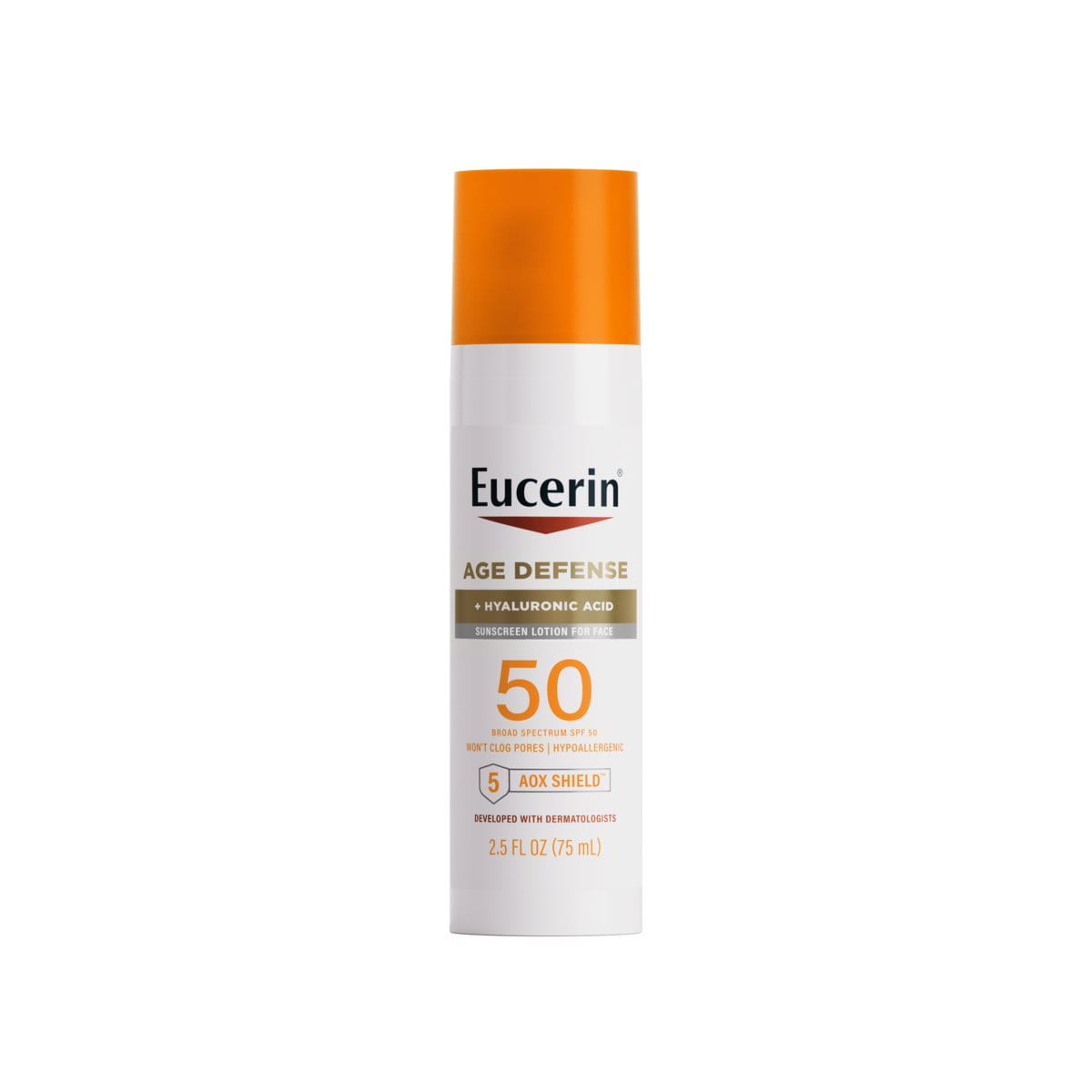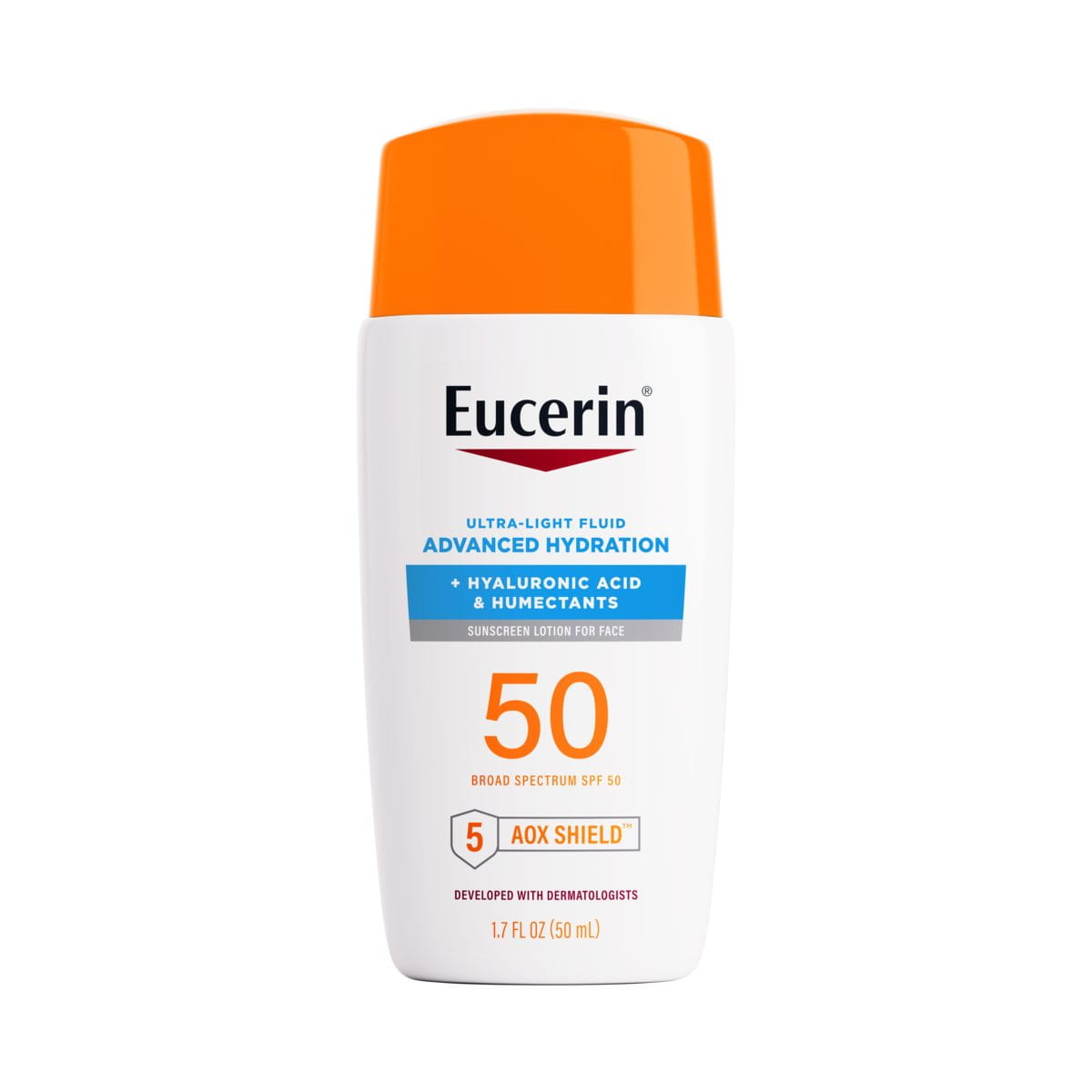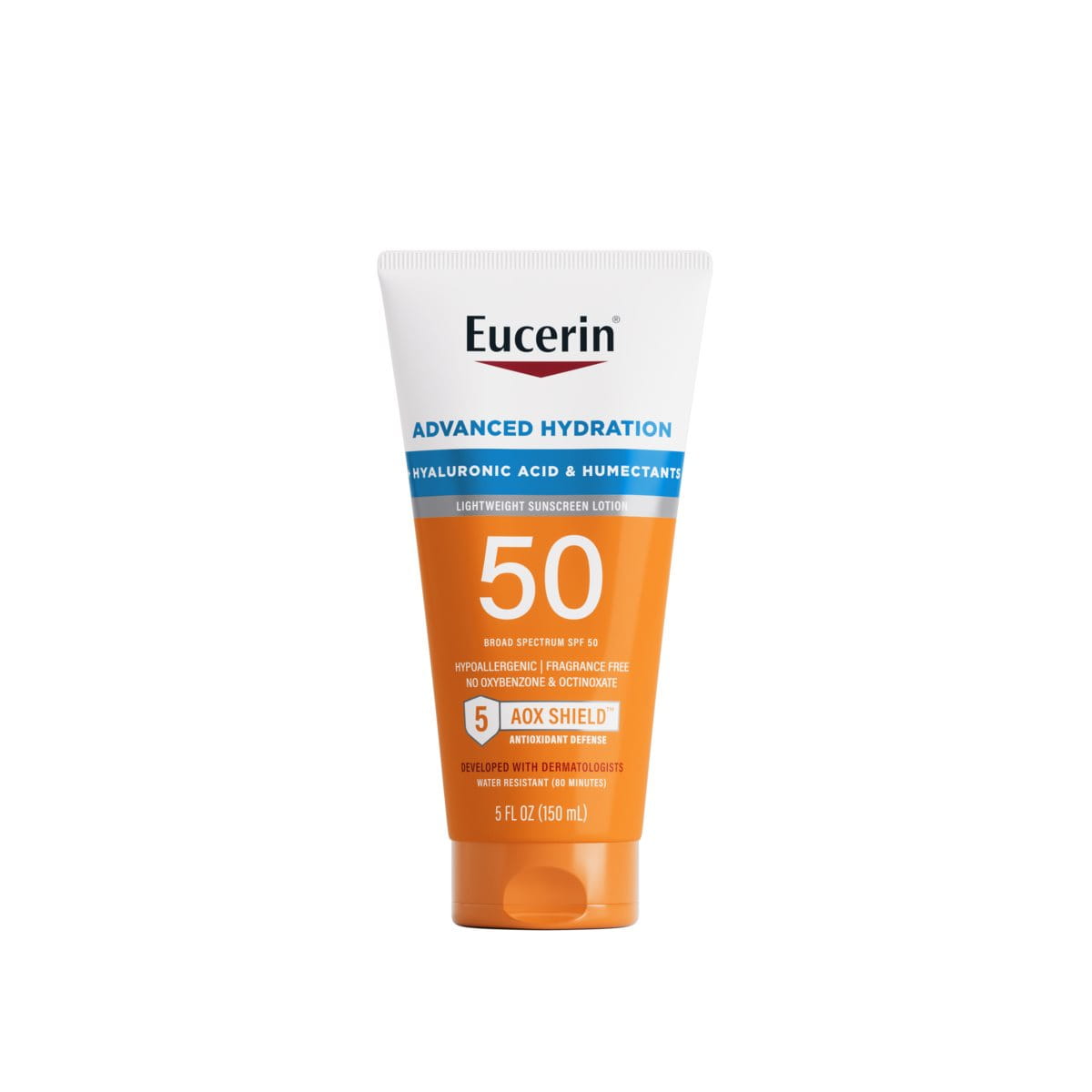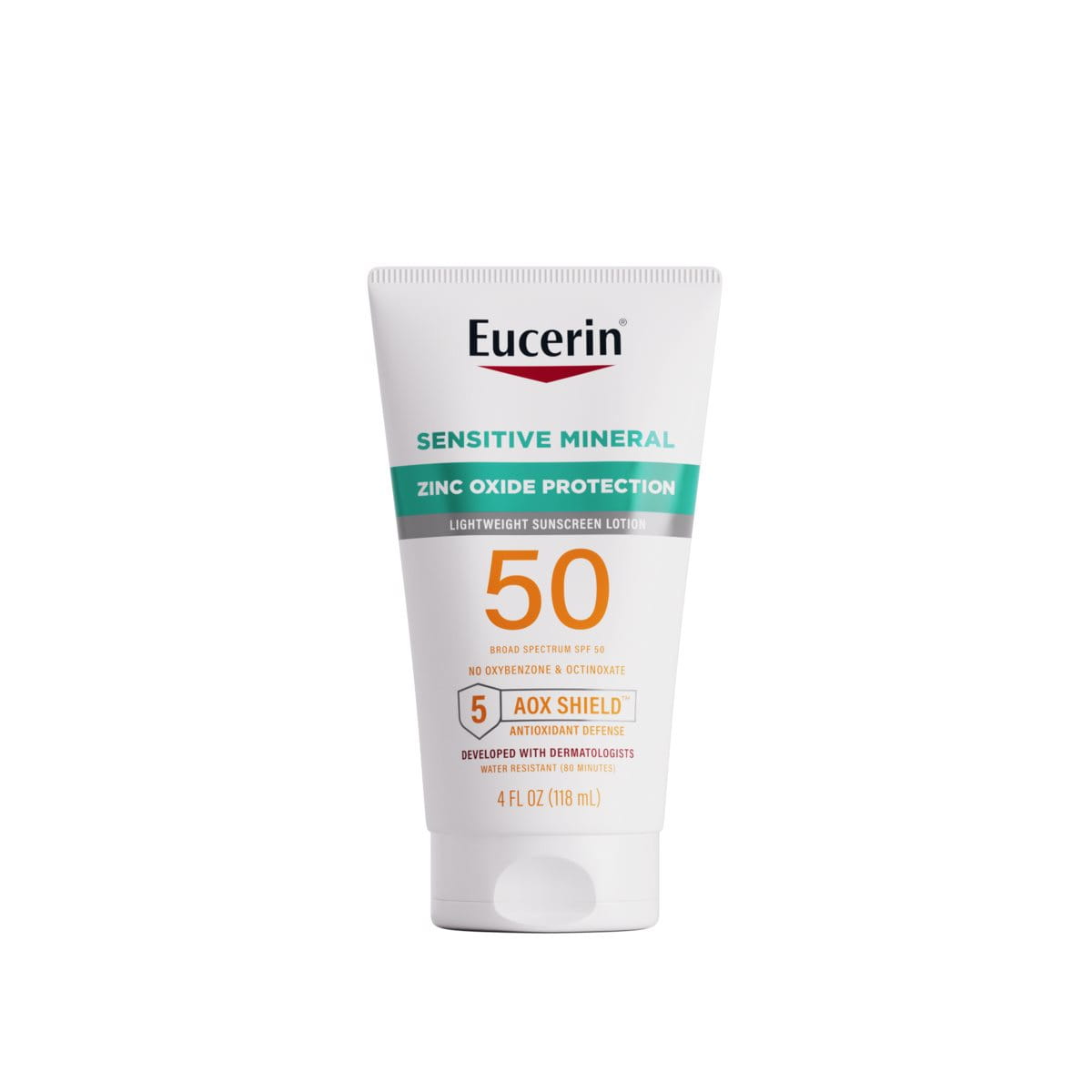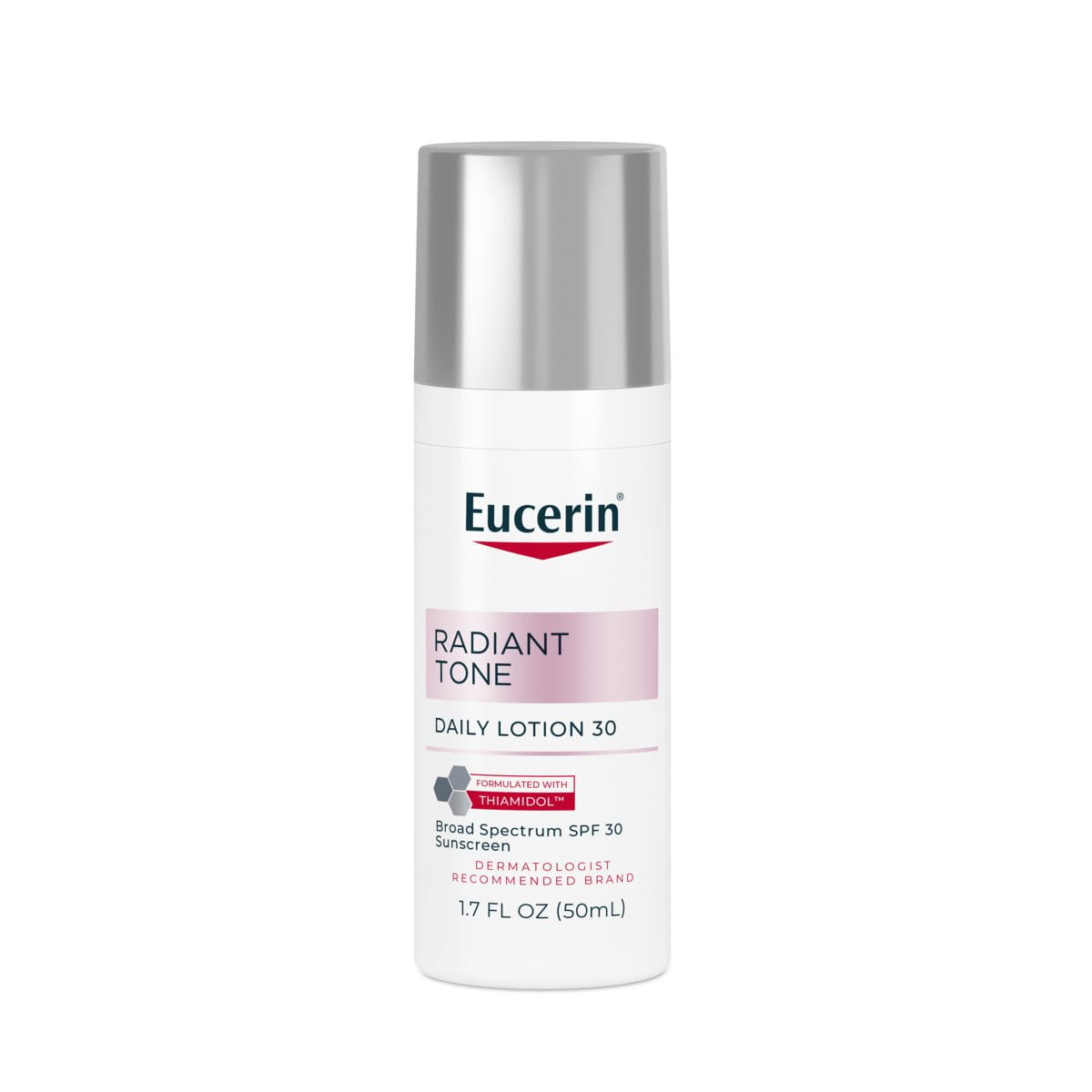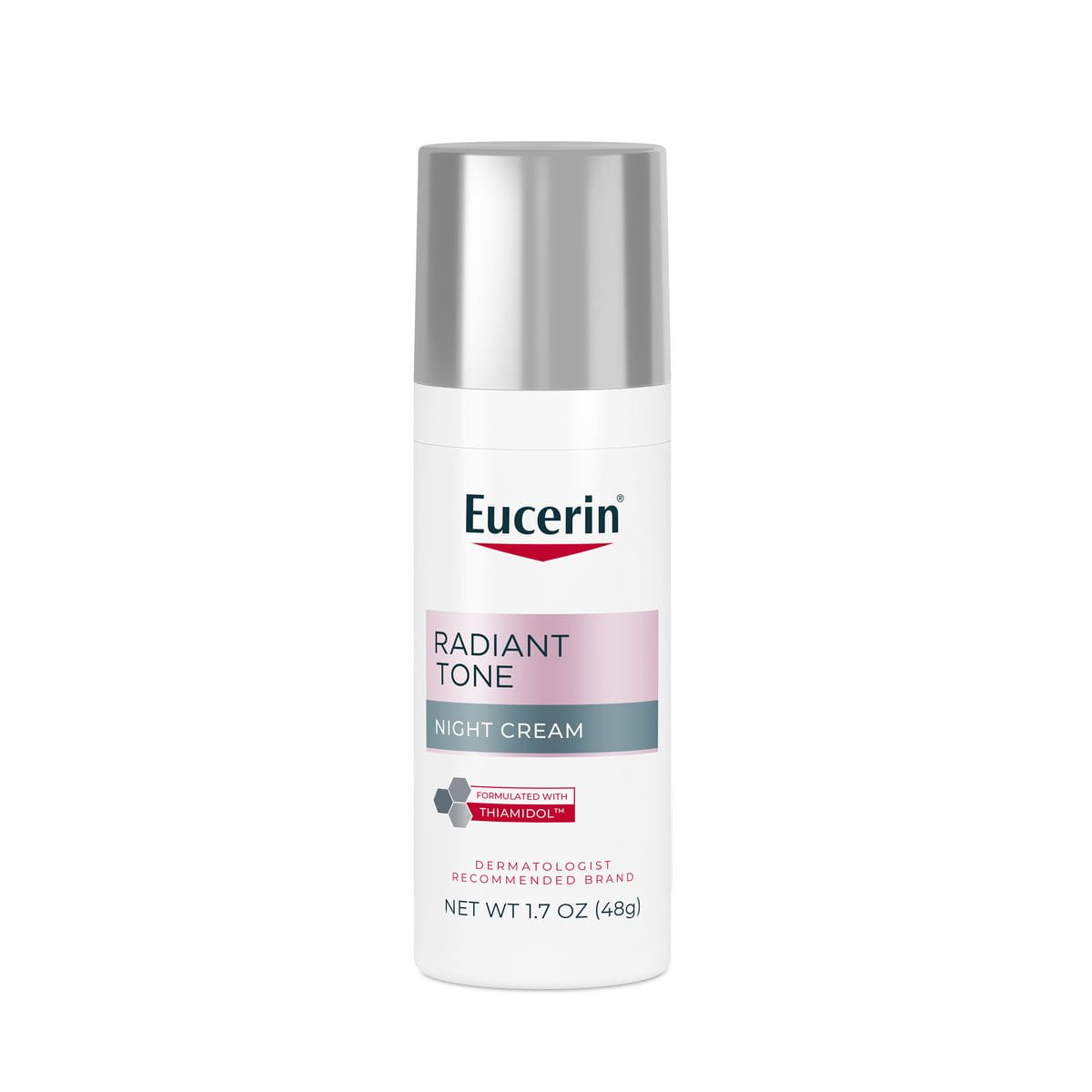Over-exposure to the sun is the main cause of premature skin aging, which is also known as photoaging or sun-damaged skin1. The sun’s UVA rays cause oxidative stress that damages the skin2. As a result, skin starts to form wrinkles, sag and develop dark spots from sun exposure. Ensuring skin is properly protected year-round, and using sun care products, can help to slow photoaging, and some products can help to reduce the appearance of fine lines, wrinkles, and dark spots caused by sun exposure.
What is photoaging?
Photoaging is premature aging of the skin caused by overexposure to the sun’s rays.
When skin ages prematurely it develops signs of aging faster than one would expect. Research shows that up to 90% of all visible symptoms of premature skin aging are caused by photoaging1.
What is the difference between general skin aging and premature skin aging?
As skin ages, it changes:
- The collagen and elastin responsible for the plumpness of youthful skin deplete, skin starts to lose volume and sag, and fine lines and wrinkles form3.
- Over time, skin is less able to attract and retain the moisture it needs and can be more prone to dryness3.
- It can develop signs of uneven skin tone such as dark spots known as solar lentigines (more commonly known as sun spots)3.
Intrinsic skin aging
As we age, so does our skin. This type of aging is entirely natural and there’s nothing we can do about it. It is known as intrinsic (or chronological) aging. Intrinsic aging is brought about by internal factors such as our genetics and the hormonal changes that happen at the different stages of life4.
Extrinsic skin aging
Extrinsic aging, on the other hand, is controllable. Extrinsic aging is brought about by external factors such as the environment (weather conditions and sun exposure), lifestyle choices (such as smoking and drinking alcohol) and poor nutrition. These factors can cause the skin to age prematurely4.
What are the signs & symptoms of photoaging?
Photoaging shows physical symptoms of damage due to cumulative sun exposure. Changes in the skin from sun damage are commonly seen in areas most frequently exposed to the sun, such as the hands and face.
Photoaging symptoms include but are not limited to5:
- Blotchy complexion on the skin
- Wrinkles and fine lines
- Dark spots on the skin known as solar lentigines (sun spots)
- Uneven skin tone
What causes photoaging?
Photoaging (Sun damaged skin) is caused by cumulative exposure to the sun’s harmful UV rays. UVB & UVA are two kinds of UV light which are directly attributed to sun damaged skin and they are classified as such below:
UVB Rays:
UVB rays cause our skin to burn in the sun and the damage they cause, along with UVA damage, can also increase the risk for skin cancer6.
UVA Rays:
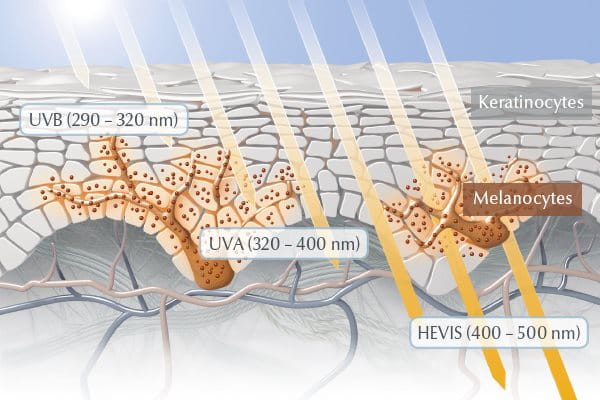
While UVB exposure shows more immediate visible damage in the form of a sunburn, UVA rays are associated with developing a suntan (yes, a tan is a signal of sun damage!), and premature aging6. UVA rays damage the skin indirectly: they trigger the formation of free radicals and it’s these free radicals that cause skin damage known as oxidative stress7.
How can I protect my skin from photoaging?
The best way to protect skin from photoaging is to take proper sun protection measures such as limiting the time spent in the sun, avoiding it during its most intense hours, wearing protective clothing, and applying sunscreen with an SPF of at least 30 (following the directions for use and reapplication on the drug facts box).
Since both UVA and UVB rays contribute to photoaging and increased risk of skin cancer, it is important to apply daily sun protection year-round using a broad-spectrum sunscreen (meaning it helps protect against both UVA and UVB rays) to help protect skin from sun damage.
Helping prevent photoaging with Eucerin
All face and body sunscreens in the Eucerin sun protection range are developed with dermatologists and offer broad-spectrum sun protection with a unique complex of 5 antioxidants (5 AOX Shield™) to help defend against free radicals and help support skin health.
Helping prevent photoaging with sun protection for the face
Eucerin Age Defense SPF 50 Face Sunscreen is a Hyaluronic Acid enriched formula that visibly reduces the look of fine lines and wrinkles with continuous use after 1 week. Non-comedogenic and hypoallergenic, this daily face sunscreen features UVA/UVB sun protection plus an Advanced Antioxidant Complex, 5 AOX Shield™, that goes beyond neutralizing to also guard from free radicals and help support skin health. Use as directed (See Drug Facts Box). Also available as a tinted face sunscreen with a blendable tint for more even-looking, radiant skin.
Enjoy broad-spectrum sun protection with the added benefit of all-day hydration* with Eucerin Advanced Hydration Ultra-Light SPF 50 Face Sunscreen. This hydrating facial sunscreen is formulated with Hyaluronic Acid and humectants for clinically tested, all-day hydration* that leaves skin glowing. With an ultra-light fluid texture and a weightless, invisible finish, this face sunscreen is suitable for daily use and under makeup. *For sun protection, use and reapply as directed with other sun protection measures (See Drug Facts Box).
Helping prevent photoaging with sun protection for the body
Get the hydrating benefits of Eucerin’s Advanced Hydration face sunscreen in a lightweight formula for the body with Eucerin Advanced Hydration SPF 50 Sunscreen. This daily sunscreen easily rubs into the skin with an invisible finish and is formulated with Hyaluronic Acid and humectants for an immediate and long-lasting hydrating effect*.
Water resistant (up to 80 minutes), hypoallergenic, and non-comedogenic, this moisturizing sunscreen features broad-spectrum protection and Eucerin’s unique 5-antioxidant complex to help protect the skin from premature aging from the sun with continuous use when used with other sun protection measures. *For sun protection, use as directed with other sun protection measures (See Drug Facts Box).
Have sensitive skin? Eucerin Sensitive Mineral SPF 50 Sunscreen features a gentle, mild, fragrance-free formula suitable for sensitive skin that features 100% naturally sourced zinc oxide*. Unlike some other mineral sunscreens that can feel heavy or greasy, Eucerin Sensitive Mineral sunscreen has a lightweight feel on skin with no heavy residue. Suitable for daily use, this sunscreen helps to support skin health by guarding from free radicals. Use as directed with other sun protection measures (See Drug Facts Box). *Based on zinc oxide active.
Managing visible signs of photoaging with Eucerin
While proper sun protection can help prevent photoaging, several of Eucerin’s Radiant Tone products can help visibly reduce the look of persistent dark spots due to sun exposure, aging, and imperfections when used regularly.
Important: Limit the use of Radiant Tone products collectively to a maximum of 4 times a day (excluding the Cleansing Gel). Do not use on active acne breakouts or irritated skin. For best skin compatibility, use products from within the Radiant Tone range.
Eucerin Radiant Tone Dual Serum helps visibly reduce the look of persistent dark spots due to sun exposure, aging, and imperfections. Formulated with Thiamidol™ and enriched with Hyaluronic Acid, this serum is lightweight, non-comedogenic, and suitable for all skin types. The formula visibly reduces the appearance of dark spots with regular use.
Eucerin Radiant Tone Daily Lotion SPF 30 formulated with Thiamidol™ helps to both visibly reduce the appearance of existing dark spots due to sun exposure while, when used as directed, helping to prevent their reappearance with broad-spectrum SPF 30 sun protection with regular use. This daily lotion improves skin’s radiance in as little as two weeks with regular use and is suitable for all skin types.
Restore skin’s radiance while you sleep with Eucerin Radiant Tone Night Cream. Formulated with Thiamidol™ and Provitamin B5, this night cream helps visibly reduce the look of dark spots due to sun exposure, aging, and imperfections and helps to maintain even-looking skin with regular use. The Radiant Tone Night Cream is non-comedogenic and suitable for all skin types.
Learn more about the Eucerin Radiant Tone range.
The information provided herein is not intended to be medical advice. Nor is it intended to treat the underlying skin disease or condition. The information is provided solely to:
- Educate on the benefits of sunscreen usage
- Improve the appearance of the skin
- Achieve healthier-looking skin
Sources:
1. Grabel, A. Photoaging: What You Need to Know About the Other Kind of Aging - The Skin Cancer Foundation. The Skin Cancer Foundation. https://www.skincancer.org/blog/photoaging-what-you-need-to-know/.
2. Cleveland Clinic. What Is Oxidative Stress? Cleveland Clinic. https://my.clevelandclinic.org/health/articles/oxidative-stress.
3. National Institute on Aging. Skin Care and Aging. Skin Care and Aging. https://www.nia.nih.gov/health/skin-care/skin-care-and-aging.
4. Zhang, S.; Duan, E. Fighting against Skin Aging. Cell Transplantation 2018, 27 (5), 729–738. https://doi.org/10.1177/0963689717725755.
5. Ways. Sun-damaged Skin: Photoaging, Signs, Causes & Treatment. Cleveland Clinic. https://my.clevelandclinic.org/health/diseases/5240-sun-damage-protecting-yourself#symptoms-and-causes.
6. The Skin Cancer Foundation. UV Radiation - the Skin Cancer Foundation. The Skin Cancer Foundation. https://www.skincancer.org/risk-factors/uv-radiation/.
7. Bosanac, MAS, S.; Burney, MBBS, W.; Leung, J.; Sivamani, MD, R. UVA Light and Oxidative Stress. UC Davis Health. https://health.ucdavis.edu/mdprogram/research/Posters2018/suzana%20poster%20final.pdf
Our brand values

We deliver a holistic approach to help keep your skin healthy-looking and radiant.

For over 100 years, we have dedicated ourselves to researching and innovating in the field of skin science. We believe in creating active ingredients and soothing formulas with high tolerability that work to help you live your life better each day.

We work together with leading dermatologist and pharmacist partners around the world to create innovative and effective skincare products they can trust and recommend.

